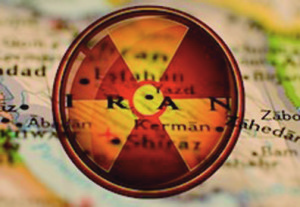November 29 2013

The International Atomic Energy Agency’s latest report on Iran’s nuclear program, released November 14, has generated a profusion of optimistic news reports and editorials. According to the IAEA, Tehran has not increased the number of centrifuges installed at declared installations or put more advanced centrifuges into operation, and its stockpile of 20 percent enriched uranium hexafluoride remains below a crucial red line. Meanwhile, work has been proceeding slowly at the Arak reactor, which will be capable of producing plutonium, an alternative nuclear explosive. And three days before releasing the report, the IAEA announced that Iran had agreed to give the agency access to information on some previously blocked aspects of its nuclear program.
Much less emphasized in the report, and the coverage of it, are the IAEA’s persistent suspicions of Iran’s true motives, as detailed under the heading “Possible Military Dimensions.” As page 10 of the thirteen-page report noted, “Since 2002, the Agency has become increasingly concerned about the possible existence in Iran of undisclosed nuclear related organizations, including activities related to the development of a payload for a missile.” The agency also received information indicating that Iran has carried out activities “relevant to the development of a nuclear explosive device.” The report deemed this intelligence to be “credible,” noting that the IAEA has obtained more information since November 2011 that “further corroborates” its analysis.
In addition, the report states that Iran “has dismissed the Agency’s concerns” and “considers them to be based on unfounded allegations.” Accordingly, Tehran is still not answering the IAEA’s detailed questions or providing access to the Parchin site just outside the capital, where it may have had an installation capable of testing conventional explosives for possible use in an implosion-type atomic bomb.
Theoretically, one could argue that Tehran’s obstinacy is in line with its narrative that the Iranian nuclear program is, and always has been, for peaceful purposes only. The government’s view of nuclear energy is explained at length in a new, apparently official, website, which reiterates Iran’s intention to master all aspects of the nuclear cycle and maintain a very extensive civil nuclear power-generating program. Yet even apart from the strong evidence of “possible military dimensions,” this approach to energy development seems odd for a country with the world’s fourth-largest oil reserves and second-largest natural gas reserves, but fairly limited uranium resources.
In the longer term, the apparent aim of current diplomacy is to make sure that Iran’s nuclear activities are kept under a stringent safeguards regime. Yet any such system requires clarity about what Iran has done and may still be doing clandestinely, not only to allow for eventual implementation of a deal, but also to mitigate the concerns of U.S. regional allies who are apprehensive about making concessions to Iran.
In the past, Tehran has not been fully open about such activities. For example, its declaration pursuant to the 2003 agreement with Britain, France, and Germany omitted mention of its advanced centrifuge program and other key activities. There is also compelling evidence that Iran was designing and preparing the underground Fordow enrichment plant as early as 2005, parallel to negotiations. Therefore, a new interim agreement cannot be implemented unless Tehran declares all of its current and past enrichment locations, all of the centrifuges it has manufactured and installed, and all of its nuclear material holdings, including yellowcake. It must also provide information about the manufacture of remaining components for the Arak heavy-water reactor.
As talks continue in Geneva this week, negotiators should focus on these and other disclosure issues in order to maximize international confidence in the diplomatic track and avoid making premature concessions to Tehran that could prove difficult to rescind. Looking at the bigger picture, the credibility of the global nonproliferation system is at stake, as is the UN Security Council’s authority to enforce its resolutions.
Simon Henderson is the Baker Fellow and director of the Gulf and Energy Policy Program at The Washington Institute. Olli Heinonen is a senior fellow with the Belfer Center at Harvard University and a former deputy director-general for safeguards at the IAEA. Previously, they coauthored Nuclear Iran: A Glossary of Terms, a joint publication of The Washington Institute and the Belfer Center.
